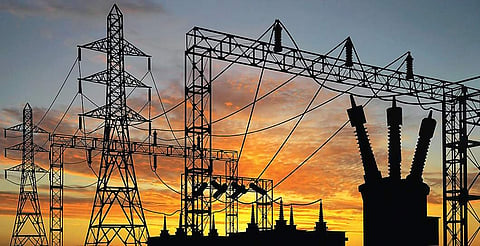

CHENNAI: The long-awaited reform process in Tamil Nadu's power sector is finally under way. As the State stares at an unexpected spike in electricity demand, the DMK government is going ahead with its plan to split the generation and distribution businesses managed under the state-run Tamil Nadu Generation and Distribution Corporation (TANGEDCO) into two separate companies.
An EY India-led consortium of consultants has begun the initial ground work. The consortium will handhold the power companies, and submit a detailed report in 15 months. The government is also looking to overhaul the high-cost debt raised by them in order to reduce the interest outgo, two senior officials told The New Indian Express.
In addition to it, it is also toying with an idea to spin off the renewable energy division into a separate company so as to attract cheaper funds and seek a much bigger valuation.
The road map is clear: the government hopes to turn around the power sector within 4-5 years, and make it a net supplier of renewable energy to the national grid. But the fact is that it is unsustainable for TN to foot the bill for the losses and leakages of power companies year after year.
In the recent State Budget, finance minister promised to fund over Rs 22,000 crore, nearly 10 per cent of the State's total revenue receipts. This includes an allocation of Rs 13,108 crore for absorbing 100 per cent of TANGEDCO's losses, and another Rs 9,120 crore for providing free electricity to farmers, subsidised electricity to powerloom industry and free electricity to all domestic consumers consuming less than 100 units.
Clearly, the DMK government has gauged the gravity of the danger lying ahead. The accumulated losses are at a whopping Rs 81,000 crore even after the government made some serious efforts to bring it down. The outstanding debt stands at a massive Rs 1.34 lakh crore.
Despite TANGEDCO bleeding for years, the electricity tariff has not seen any revision after it was revised last in December 2014. The average tariff realisation for domestic consumers is a paltry Rs 2.20 per unit, way below the production/purchase cost.
Rising demand may push Tamil Nadu towards green energy
At present, the average cost of purchase revolves around Rs 5-6 per unit, while the spot price during peak hours has gone through the roof - beyond Rs 20 per unit. This has left all electricity distribution companies across the country, including TANGEDCO, in the lurch.
"Electricity is a highly political issue in Tamil Nadu. Unless the rates are revised, it's difficult to meet the rising production cost," said a senior consultant who has worked with various State governments on their power- sector reforms.
The pandemic created a big mess for electricity planners across the country, said a senior power sector official. "Electricity consumption had taken a substantial dip in the last two years. It gave an impression that demand growth would continue to be subdued, and nobody thought the demand would shoot up. There is a sudden spike in consumption now, making the national grid wobbly during peak hours," he said, adding that the demand has already breached the pre-COVID levels of 1.7-1.9 lakh MW across the country.
In the current scenario, Tamil Nadu faces several challenges. Its policy for setting up data centres will lead to a spike in consumption, with each one consuming an additional 50-100 MW. On the other side, the growth of electric vehicles in the State will eventually mean a spurt in the electricity demand.
Tamil Nadu may be forced to go for renewable energy as more companies, especially MNCs, are now demanding green power to meet their sustainability targets. One of the biggest challenges faced by TN is the proposed transition from coal to renewable energy (RE).
"What is the alternative when RE is not round-the-clock (RTC) power? With gas-based power plants that allow you to quickly ramp up or ramp down production not available, how will you fill the gap?" asks the official.
With banks staying away from funding power projects for the fear of defaults, raising finance for capital expenditure (capex) is another headache. "If we were to fill the gap of 6,000 MW, we need to set up an installed capacity of 30,000 MW of solar since the plant load factor is only 20 per cent. To build 30,000 MW, you will need at least Rs 1.3 lakh crore, with each MW of generation costing around Rs 4.5 crore in capex. Even for foreign multi- lateral agencies, it is a huge amount," says the official.